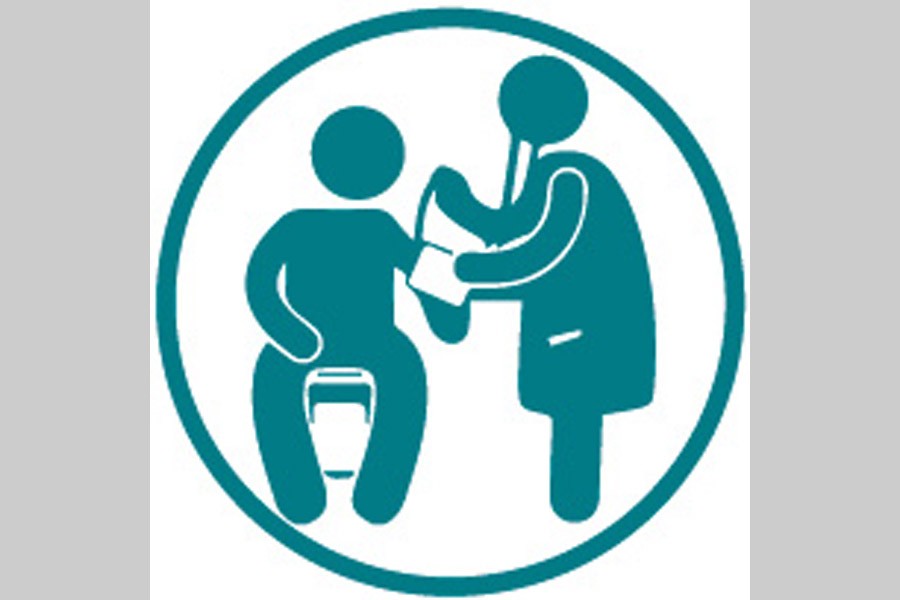'Around US$4.0 billion flies out of the country as medical expenses annually' screamed the headline of a report published in one of the Bengali contemporaries late last week. Half of the amount goes to neighbouring India.
Converted into Bangladesh currency, the amount will surely cause most citizens enough concern notwithstanding the fact that many of them seek treatment abroad on occasions.
People are aware that quite a good number of patients seeking 'better' treatment go mainly to India, Thailand and Singapore. Some rich people even go to the USA, the UK and some other developed countries. The middleclass and lower middleclass patients prefer India while considering costs.
It is hard to know the actual number of people travelling abroad every year to get treatment and the amount of money they spend. This is because thousands do take 'tourist' visas, but they also make medical expenses.
About five years back, the Bangladesh Investment Development Authority (BIDA) reportedly tried to know the number of Bangladeshis going abroad for medical purposes and the amount of money involved in such visits. According to its estimate, around 128,000 Bangladeshis spent more than US$2.0 billion while seeking treatment in India, Thailand and Singapore in 2012.
The number of Bangladeshis going to India with M (medical) visas soared to more than 221,000 in 2017. In fact, more and more people are going abroad seeking better treatment.
However, all the estimates about number of outbound patients and expenditures are assumption-based. But the truth is that despite substantial growth of medical facilities at home in recent years, more and more patients are going abroad and spending a lot of money there.
Of course, all concerned, including policymakers, doctors and health services owners, are aware of the developments, but none have ever cared to reverse the trend. They have allowed the queue of outbound patients to grow bigger.
Going abroad for treatment even for minor illness could be a fashion for the rich, but not for the middle and lower middleclass families. The latter, in many cases, are forced to sell their property or spend life's savings or borrow from others to meet medical expenses abroad.
The relevant policymakers do need to look into the issue seriously, if they are really interested to stop outflow of funds on account of medical treatment abroad.
They should first locate the deficiencies that are forcing even the middleclass and lower middleclass people who are otherwise cost conscious to seek treatment abroad. They should also try to know from the patients or their families the reasons behind their going abroad. Is it dearth of facilities or lack of skill on the part of doctors at home? Is it people's lack of confidence in service delivered by hospitals and doctors?
The government agencies concerned might also carry out a survey to know about the satisfaction level of the people who have availed medical services abroad. It will also be important to know how patients differentiate the services offered by foreign doctors or hospitals and that by local ones.
However, gathering of information would not carry any meaning unless those are followed up by appropriate corrective actions to make the local health service delivery better and improved.
Health industry people and physicians do make claims that medical facilities available in the country have improved a lot in recent years and except for special cases there is no need for patients to seek treatment abroad.
The local health services have undeniably improved and the number of patients crowding both government and posh private hospitals is a testimony to that fact.
The people who attended medical facilities in India in particular say, with a cost little bit higher than it is in Bangladesh they had received better treatment. Of course, there are different views. Some people do return unsatisfied. The level of satisfaction, naturally, is high in the case of Thailand and Singapore.
Patients and their families are found to be more appreciative of the services offered by doctors, nurses and other medical staff of foreign hospitals. They find doctors there in particular communicative and caring.
Though private hospitals and clinics have mushroomed in the country over the years the quality of services delivered by most of those is found to be poor. The number of hospitals of international or regional standard is quite a few and those are located only in Dhaka. Other cities and towns do not have modern health facilities in their true sense.
So, it is important to have modern hospitals in divisional and district headquarters. But, unwillingness of skilled and senior health professionals to work outside Dhaka turns out to be a major problem here. As if to follow their footsteps even junior doctors despise postings beyond the capital city. However, attractive facilities might lure senior health professionals to cities and towns other than Dhaka.
There is another important point that the government should take note of. According to a report prepared by the Ernst and Young (EY), a multinational professional services firm, more than 60 per cent patients seeking health services in India are affected by non-communicable diseases (NCDs). This reveals the fact that the country lacks enough facilities and expertise in handling NCDs.
Complaints against the quality of health services will always be there. But there should be genuine efforts at the levels of both government and health professionals to make the list of complaints shorter by improving the quality of services they offer to patients. Once that is done, the number of outbound patients would automatically start coming down.


